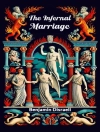In ‘Don Orsino, ‘ F. Marion Crawford masterfully weaves a tale of love, sacrifice, and the interplay between personal desire and societal obligation. Set against the backdrop of the sun-drenched streets of Sicily, Crawford’s narrative embraces a lyrical prose that evokes the rich cultural tapestry of Italian life. The novel explores the complexities of romantic entanglements through its protagonist, Don Orsino, whose emotional journey reflects the tensions inherent in societal expectations and personal happiness. With a vivid depiction of the enchanting Sicilian landscape and its nuances, Crawford’s work operates within the tradition of late 19th-century realism, exploring themes of honor and passion amidst the changing tides of social mores. F. Marion Crawford was an American author with a profound affinity for Italy, where he spent a significant part of his life. His experiences as both a resident and an observant outsider endowed him with a unique perspective on Italian customs and traditions. This cultural immersion, combined with Crawford’s own explorations of human psychology, clearly informs the character-driven narrative in ‘Don Orsino.’ Crawford’s earlier works also grapple with the themes of duality and conflict, establishing a continuum that enriches our understanding of societal constraints on personal freedom. ‘Don Orsino’ is a must-read for enthusiasts of literary fiction who appreciate insightful character exploration and cultural nuance. Crawford’s ability to portray the intricate dance of love and duty invites readers to reflect on their own lives and choices. This novel stands as a timeless discussion of the human condition, making it an essential addition to the shelves of those interested in classic literature and the art of storytelling.
عن المؤلف
Francis Marion Crawford (1854–1909), an American writer noted for his many novels, was born to an artistic and affluent family; his father was the sculptor Thomas Crawford, and his relative Julia Ward Howe was the author of ‘The Battle Hymn of the Republic.’ Educated in the USA, Cambridge University, and the University of Heidelberg, Crawford was a polymath, versed in multiple languages and initially sought a career in Sanskrit studies. Eventually, he turned to writing, first in India, then Italy, where he made his permanent home. His literary style incorporates his rich experiences and knowledge, often featuring exotic locations and historical details that appeal to a sense of romantic adventure and cultural depth. ‘Don Orsino’ (1892) stands as one of Crawford’s many works that encapsulate such literary qualities. It is the third in the series following the lives of the Roman aristocratic Saracinesca family, preceded by ‘Sant’ Ilario’ and ‘Saracinesca.’ Crawford’s narratives often bridge the gap between the 19th-century sentimentalist tradition and the emerging realist movement in literature. His prolific output and distinctive style helped him to gain a significant readership during his lifetime, and his works remain a testament to his narrative talent and his ability to capture the interconnectedness of European and American cultural spheres.












